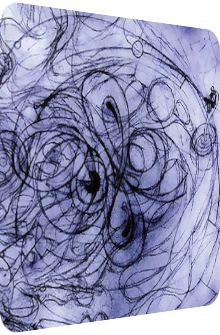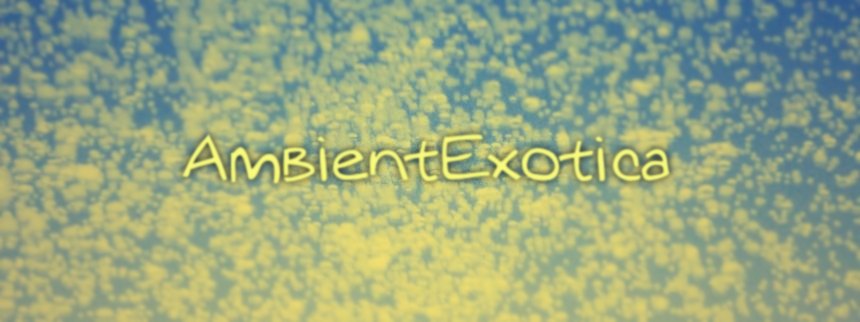
Bola
Soup
1998
One of the most melodious, synth-heavy and abyssal albums ever released, Bola's Soup, released in 1998 on Skam Records, is a terrifically deep release, incessantly oscillating between airy coldness and ethereal streams of warmth, providing convoluted beats and rhythms that underline both the soporific synth washes and the fluid ambience of each track. Although Soup is categorized as an IDM or Downbeat album, Darrel Fitton aka The Bolaman stresses the serenity on his debut album more than anything else, and even though the beats are eclectic and oftentimes pumping, they do never distract from the multilayered galaxies that swirl around each track. Strictly speaking, Soup is no Ambient album, but the layers are so complex yet of a glacial dreaminess that they would work fantastically well in a beatless context. And indeed does Bola present various flavors of electronic music in the ten tracks of Soup, ranging from phantasmagoric dubs over cavernous whirls to spectral melancholy. When lots of musicians during the turn of the millennium came up with futuristic compositions that consist of staccato beats and ambitious arhythmic frameworks, Soup intertwines these particularities with retrograde, analog melodies and tiny fragments of nostalgia that aren't boldly explicated via vinyl crackles or blurry vignettes, but only implied through his way of setting up the synthesizers. The album creates a heavy maelstrom at times and is quite dark and sorrowful overall, but one could also interpret these perceptions as moments of utter grace and majesty.
And off Bola goes with Glink that fades in slowly with a monotonous synth string that transports a dusky glow which is then enhanced by an additional layer of a darker, Gas-like drone. Bouncy synth pad loops underline the growth of the synth string which starts to shimmer cherubically in brighter colors and begins to feature different keys, thus becoming a rudimentary melody. Shortly before the three minute mark, the percussion layer reaches its peak with icy cymbals, looped blows and laser effects while the synths have long turned into an unexpectedly friendly, bright and blissful entity, presenting multiple layers that altogether work in unison. Versivo shifts the setting by merging the peculiarities of liquid depths or aerial realms in one song which I consider a masterpiece: loops of fluid clangs, chopped percussion, electronic claves and screeching as well as quavering drones echo through the room, leaving reverberated remnants that are overlaid by the repetition. After about 70 seconds, the most translucent, vital and ethereal synth strings are presented while an unusually complex rhythm accompanies them. These flowing and breathing strings of a heavy lightness are of such a beauty that I won't describe them any further, for everyone who has heard them will be equally enchanted and blown away and knows how bad my description of them really is. Further coruscating synth pads augment the melodious setting with a vestigial six-note loop, when after five minutes different, thinner and colder strings enter the scene, evoking an intense feeling of immediacy. Pleasing fans of both complex rhythms and Ambient structures, this tune is an instant hit. If there is one song you want to check out, let it be Versivo. Next is W.I.K which presents a chopped, pulsating melody of haziness with similarly misty, heavily reverberated melody fragments of mystique and solemnity. The percussion is turned up a notch and is crunchy, almost Hip Hop-like. Even though the beats are put to the forefront, the staccato melodies plus the 8-bit intersections which are thrown in whenever the beat is dropped make this a tense ride which contains the right amount of polyphony to fit into the overarching scheme.
Up next is Bola's Forcasa triptych, and while all of its parts are titled and numbered, each song is valuable on its own and doesn't rely on the melody or mood of the precedent material. Forcasa 1 consists of a high-pitched scintillating synth pad loop which is backed by old-fashioned analog swirls that remind of 80's New Age experiments. Once the beat sets in, it can successfully push the focus to the interplay between loud percussion and quiet synths. A jumpy square lead synth is embedded later whose gleam can cope with the eclectic beats. Forcasa 2 seems to take a bow in front of the iconic 76:14 by Global Communication due to its fragile, angelic synth mélange that is allowed to glint in a beatless surrounding for two minutes. Afterwards, hectic beats and faux-whale song snippets as well as quirky pulses and sirens turn up, changing the mood completely. Forcasa 3 is the most prolific song of the trio. It introduces the most reduced setup so far with a 3/4 time rhythm and another 8-bit synth pad that is followed by a layer of melancholic sparkles and a lively beat. Majestic strings meander in the background and boost the sad mood further. The end of this song is especially worth mentioning, for all the bits of the rhythm are crushed, making room for a heavily pulsating Ambient melody that lasts a minute or so, reminding of an underwater scenery.
The album ventures into heavy fields of melodrama and sadness from this point on. While Pendulus consists of a silky-wonky percussion that is rising, falling and subordinate to a heartbreaking melody of despair and loneliness on both synths and a high-pitched electronic flute, the nine and a half minute long Amnion begins with fuzzy metallic bursts and a danger-evoking backing beat complete with sprinkler-like percussion; it later features an utterly cold and intimidating melody that could have been taken out of Aphex Twin's Selected Ambient Works Vol. II, thus creating a claustrophobic mood which is later minimized by pumping beats and looped static noise bursts. Aguilla is a strong fan favorite if you look at the glowing reviews on the net, and its dub heaviness is indeed a huge plus. A beautiful flute melody juxtaposed to hazy drones marks the beginning of the song until the most majestic, fragile, forlorn and utterly melancholic melody is introduced with echoey "Tell him I miss you" Pop fragments. Depending on the listener's mood, the song is either solemn and quiescent or deeply saddening. I tend to believe in its sadness, until the fourth minute when an unexpectedly jazzy piano melody is introduced that adds an element of lightness to the mix. A gorgeous song all in all, and though I prefer mystical or jolly Ambient songs, the dubby Aguilla is simply terrific in interweaving perfectly fitting Pop, Jazz, Dub and Ambient elements into one melancholic track. Simply awe-inspiring! The final 11-minute piece Whoblo is build upon a bouncy, strolling percussive layer with aquatic synth strings that inherit both graceful beauty and icy fragility due to their high-pitched pulsating sustain. Not much changes over the course of 11 minutes, but the synth strings seem to be organic, slightly changing over time. A hidden bonus track at the end is a beatless piece of quickly pulsating Trance-like melodies with sirens and shimmering bits woven in.
As the artworks of both the original and the re-issued release – as seen above – already suggest, Bola's Soup is dark and heavy, but does not intimidate or threaten the listener with cheap shock effects or apocalyptic settings, but rather encapsulates him or her in an illuminating, shelter-maintaining aura of tranquility, bliss and excitement. This album is best enjoyed at night, for each and every track contains a nocturnal aura, a glint of coldness, but also waves of energetic and elevating synth washes; in this regard, the unbelievable Versivo comes to mind, which is not only my most favorite song off the album, but one of the best electronic compositions ever that captures to unite cherubic and gorgeously warped synth layers with ambitious percussion, an unusual rhythm and glistening pulses; it blows every listener away, regardless of their favorite genre or listening habits. This is the standout track to my ears, and is yet skillfully embedded in the string of equally gloomy but glowing offerings. Aguilla is the other standout track due to its successful concoction of fragments that belong to entirely different genres but still form a coherent track when put together. This track could be the actual masterpiece of Soup, depicting Bola's skill of creating a new context out of different materials, a skill which he incidentally shows once more on Pae Paoe off his follow-up album Fyuti. All in all, Soup offers a splendid mixture of various electronic styles that are assembled into a coherent result. While this is no Ambient album in the classical sense, all ten songs rely heavily on multiple layers of strings and synth washes, with a few beatless intersections that let these elements shine all the more. If you are a fan of the darker Ambient sound and don't know about this classic yet, definitely check it out.
Ambient Review 062: Bola – Soup (1998). Originally published on Apr. 25, 2012 at AmbientExotica.com.
